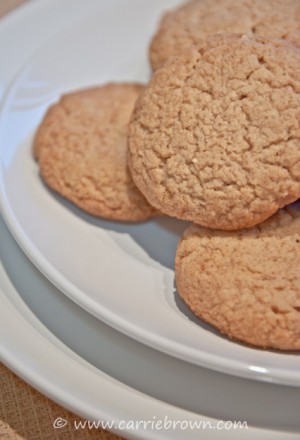“Food intake occurs until signals arising largely from the gastrointestinal tract are interpreted by the central nervous system to produce…satiety” – D.S. Weigle, University of Washington
A calorie is not a calorie when it comes to filling us up and keeping us full. Ever notice how a six-pack of beer makes people eat more pizza while five cans of tuna or thirty cups of broccoli—the same quantity of calories—would make them uncomfortably full? The capacity of calories to make us and keep us full is called Satiety. The fewer calories needed to fill us up and the longer those calories keep us full, the higher their Satiety.
When we eat high-Satiety food, we get much more Nutrition and become full much more quickly. More food and more Nutrition is entirely different from less food and feeling hungry. The surplus of Nutrition from high-Satiety food takes starvation off our metabolism’s radar. After all, how could it think we are starving since we are taking in more Nutrition? Then it is free to burn body fat instead of slowing down or burning muscle.
In addition to keeping us too full for low-quality foods, high-Satiety foods have been shown to help clear our hormonal clog. That leads to long-term fat loss—not starvation.
So we need to find the answers to two questions: What increases Satiety? And how do we eat more high-Satiety calories?
The water, fiber, and protein in food increase its Satiety. And we eat more high-Satiety calories by eating more water-, fiber-, and protein-rich foods such as non-starchy vegetables, seafood, lean meat, fat-free or low-fat cottage cheese, fat-free or low-fat plain Greek yogurt, eggs, legumes, and fruits.
Now let’s get scientific for a second. We have two areas in our brain that tell us when we feel satisfied: the lateral hypothalamus and ventromedial hypothalamus. Think of them as our Satiety centers. They send their respective “you are hungry” or “you are satisfied” signals depending, basically, on three factors:
- How much do the calories we are eating stretch our digestive organs (our stomach, etc.)?
- How much do the calories we are eating impact short-term Satiety hormones?
- How much do the calories we are eating stimulate long-term Satiety hormones?
How much any given food stretches our stomach and other digestive organs is mostly determined by the amount of water and fiber in it. More water and fiber means bigger food. Bigger food means more stretch. More stretch means we get full faster and stay full longer.
That is why 200 calories of wet, fibrous celery is more filling than 200 calories of dry, fiber-free gummy bears. Calorie for calorie, celery is about thirty times the size of gummy bears, stretches our stomach and other digestive organs about thirty times more, and is therefore thirty times more satisfying.
In the next post we’ll dig into the third factor influencing Satiety: protein.
- Anderson, G.H., and Woodend, D., “Effect of glycemic carbohydrates on short-term satiety and food intake,” Nutr Rev 2003; 61(5): 17-26
- Araya, H., et al., “Short-term satiety in preschool children: a comparison between high protein meal and a high complex carbohydrate meal,” Int J Food Sci Nutr 2000; 51(2): 119-124
- Bell, E.A., et al., “Sensory-specific satiety is affected more by volume than by energy content of a liquid food,” Phys Behav 2003; 78(4): 593-600
- Blundell John E., Stubbs R. James. Diet Composition and the Control of Food Intake in Humans In: Bray GA, Couchard d, James WP, eds. Handbook of Obesity. New York: Marcel Dekker, 1997: 243-272.
- Blundell, J.E., and MacDiarmid, J.I., “Fat as a risk factor for overconsumption: satiation, satiety, and patterns of eating,” J Am Diet Assoc 1997 97(7): S63-S69
- Green, S.M., et al., “Effect of fat- and sucrose-containing foods on the size of eating episodes and energy intake in lean males: potential for causing overconsumption,” Eur J Clin Nutr 1994; 48(8): 547-555
- Guinard, J-X, and Brun, P., “Sensory-specific satiety: comparison of taste and texture effects,” Appetite 1998; 31(2): 141-157
- Holt SH, Miller JC, Petocz P, Farmakalidis E. A satiety index of common foods. Eur J Clin Nutr. 1995 Sep;49(9):675-90. PubMed PMID: 7498104.
- Holt, S.A., et al., “The effects of equal-energy portions of different breads on blood glucose levels, feelings of fullness and subsequent food intake,” J Am Diet Assoc 2001; 101(7): 767-773
- Holt, S.H., et al., “A satiety index of common foods,” Eur J Clin Nutr 1995 Sep; 49(9): 675-690
- Marmonier, C., et al., “Effects of macronutrient content and energy density of snacks consumed in a satiety state on the onset of the next meal,” Appetite 2000; 34(2): 161-168
- Pasman, W.J., et al., “Effect of one week of fiber supplementation on hunger and satiety ratings and energy intake,” Appetite 29(1): 77-87
- Porrini, M., et al., “Effects of physical and chemical characteristics of food on specific and general satiety,” Phys Behav 1995; 57(3): 461-468
- Porrini, M., et al., “Evaluation of satiety sensations and food intake after different preloads,” Appetite 1995; 25(1): 17-30
- Rigaud, D., et al., “Effects of a moderate dietary fiber supplement on hunger rating, energy input and faecal energy output in young, healthy volunteers. A randomized, double-blind, cross-over trial,” Int J Obes 1987; 11(1): 73-78
- Rolls, B.J., and Roe, L.S., “Effect of the volume of liquid food infused intragastrically on satiety in women,” Phys Behav 2002; 76(4): 623-631
- Smith GP, Gibbs J. The effect of gut peptides on hunger, satiety, and food intake in humans. Ann N Y Acad Sci. 1987;499:132-6. Review. PubMed PMID: 3300478. & Harvey RF. Gut peptides and the control of food intake. Br Med J (Clin Res Ed). 1983 Nov 26;287(6405):1572-4. PubMed PMID: 6416508; PubMed Central PMCID: PMC1549802.
- Weigle DS. Human obesity. Exploding the myths. West J Med. 1990 Oct;153(4):421-8. Review. PubMed PMID: 2244378; PubMed Central PMCID: PMC1002573.
